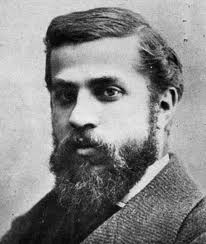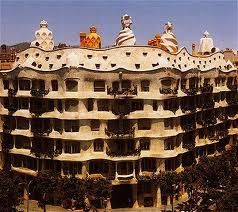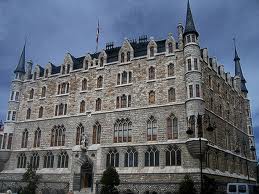Modernist Architecture
Roundabout the turn of the XX century a new sensibility arose in the West which would dominate the aesthetic and even moral judgment of societies, possibly up until the Second World War. It was the emergence of Modernism, a novel proposition that, following very much on the steps of what had been developing up to that point, stressed the importance of the aesthetic sense.

Present in all forms of artistic expression, Modernism advocated for the creation of art for the sake of art and championed, above all, sophistication, wit, intellect and, ultimately, genius. In strictly architectural terms, the tendency was towards the fusion of all arts into one, or at least the use of all arts simultaneously in the joint endeavor of enhancing the architectural elements.
Catalonian Modernisme
Modernism was particularly strong, particularly influential in Spain in the region of Catalonia where the pervasive French influence might well have sparked the flurry of action that would take place in Barcelona and the province in the final years of the XX century. If you have been travelling to Barcelona then you will be familiar with the work of Antoni Gaudi.
Tremendously influenced by nature, Gaudi was also a deeply mystical man whose architecture was always inspired by those two elements, implementing an astonishingly organic approach to his designs as well as to his building. So much can be intuited from his most famous work, the Sagrada Familia, the plans for which are primarily built in three dimensional models, rather than drawn on paper.

Among the most famous buildings in the world, the Sagrada Familia was conceived from the start as a monumental project, defined primarily by the height of its spires and the extravagance of its design. Presently there are eight spires in place, completing two of the facades, with a third facade only recently just started. Symbolically charged at every level, the Sagrada Familia has long become itself an icon of the spirit of one of the coolest cities in the world.
And Gaudi, through his unmistakable and prolific legacy has contributed enormously to the projection of Barcelona as precisely that: the capital of cool. Sprinkled in various locations of the city, his works, from the Casa Batlló to the casa Figueras, from Güell Park, with its palace, to the Casa Millá, Gaudi's playful designs, intricate patterns and intellectually challenging concepts offer a unique aesthetic proposal.
Special as he may be, Gaudi is likely not the best representative of Modernism, just because his work is that outlandish. A better sample of the typically Catalonian style might be that developed by Lluís Domènech, whose most representative work is the Palau de la Música, Barcelona's most emblematic music venue located on a wonderfully ornate corner building decorated with a large sculptural complex.
Beautifully appointed inside, the Palau is carefully crafted and has been furnished with details in every corner, from the entrance hall to the staircase. Particularly striking are the stained glass windows and skylark once inside the actual music hall, which create a somewhat eerie atmosphere, perfect for unorthodox performances.
The Rest of the Country

Just like Barcelona is not only Gaudi, however, Modernism is not only found in Barcelona. Needless to say, a great number of the works that fall within Catalan Modernisme were built in the province. But beyond that, the influence of the movement started in Catalonia reached the southern shores of Murcia, for instance, where architects such as Victor Beltrí, for instance, developed a similar style to that of Domènech.
Other samples of Modernism if you visit Spain are often extrapolations of the Catalan movement, built purposely elsewhere. Such is the case with the 'Palacio Episcopal' of Astorga, designed and built by Gaudi himself, which contains elements of revivalist architecture (Neo-Gothic) as well as Modernist, or the famous casa Botines in the city of León, both of which transport the typical elements found in structures all over Barcelona to a foreign environment, as it were.
